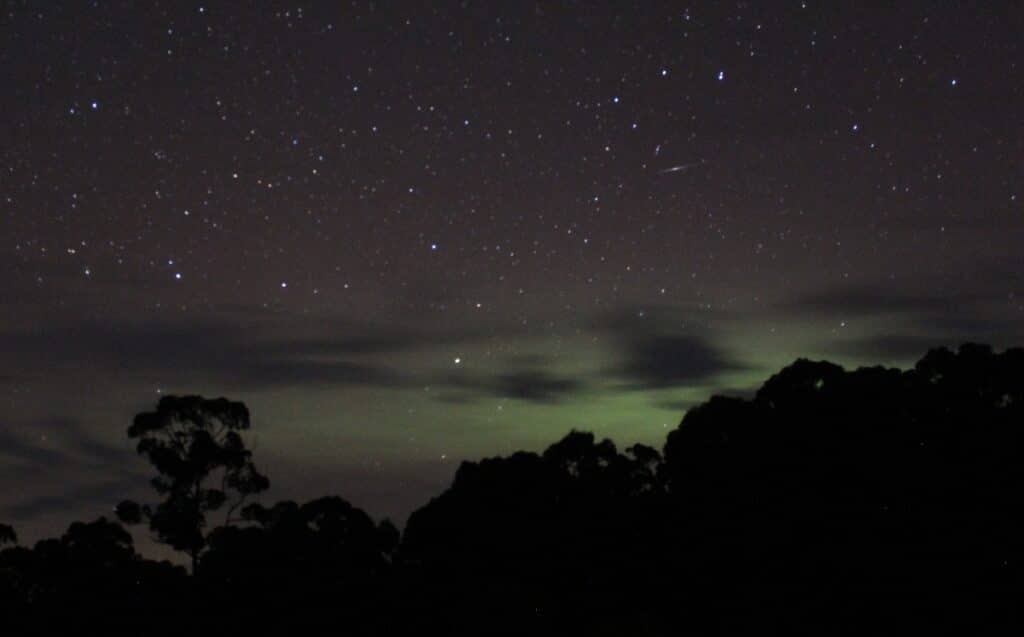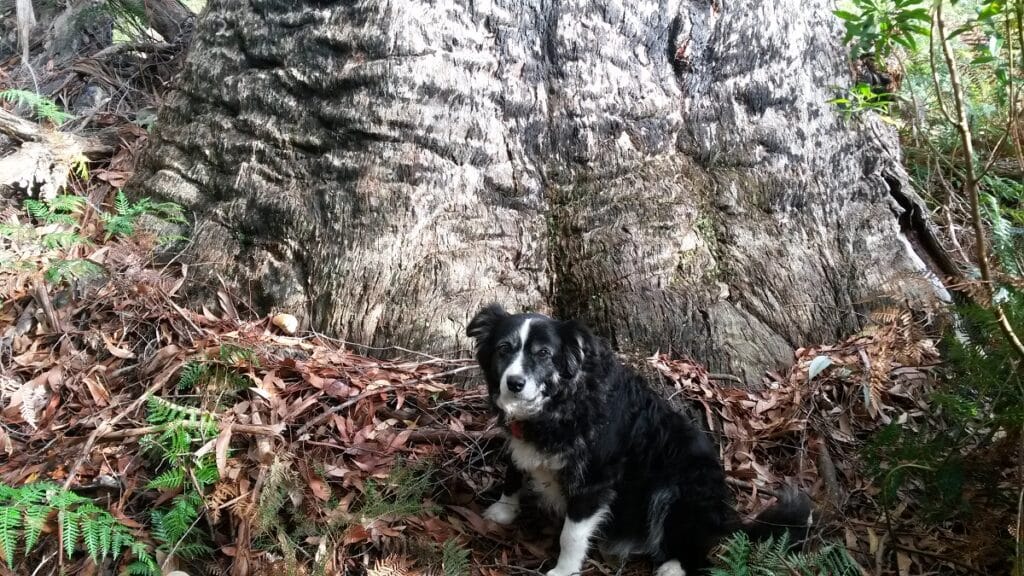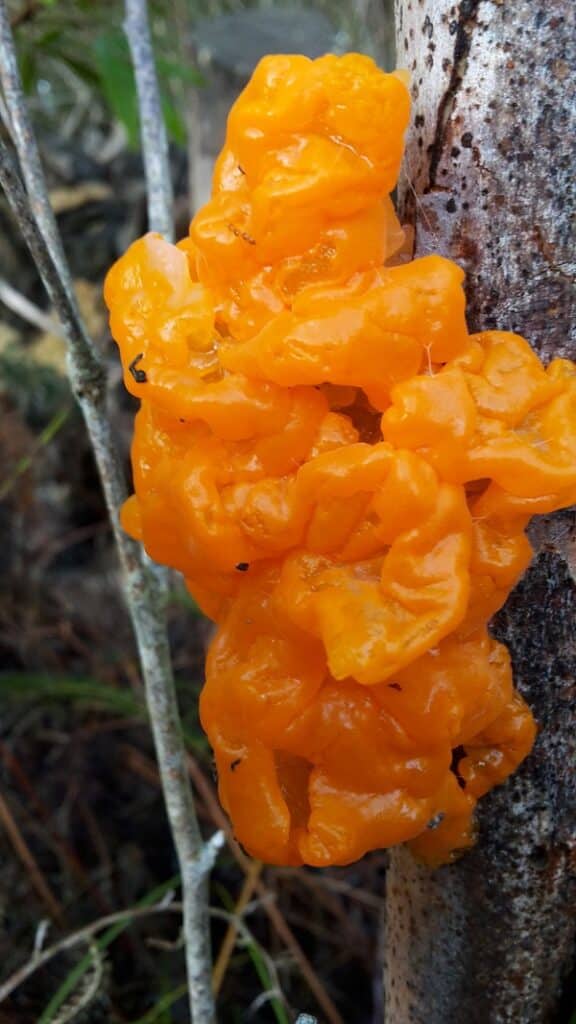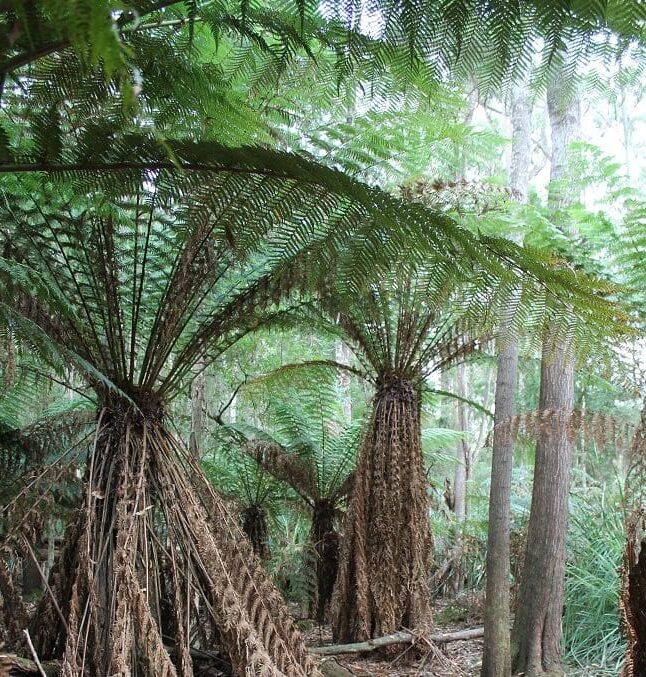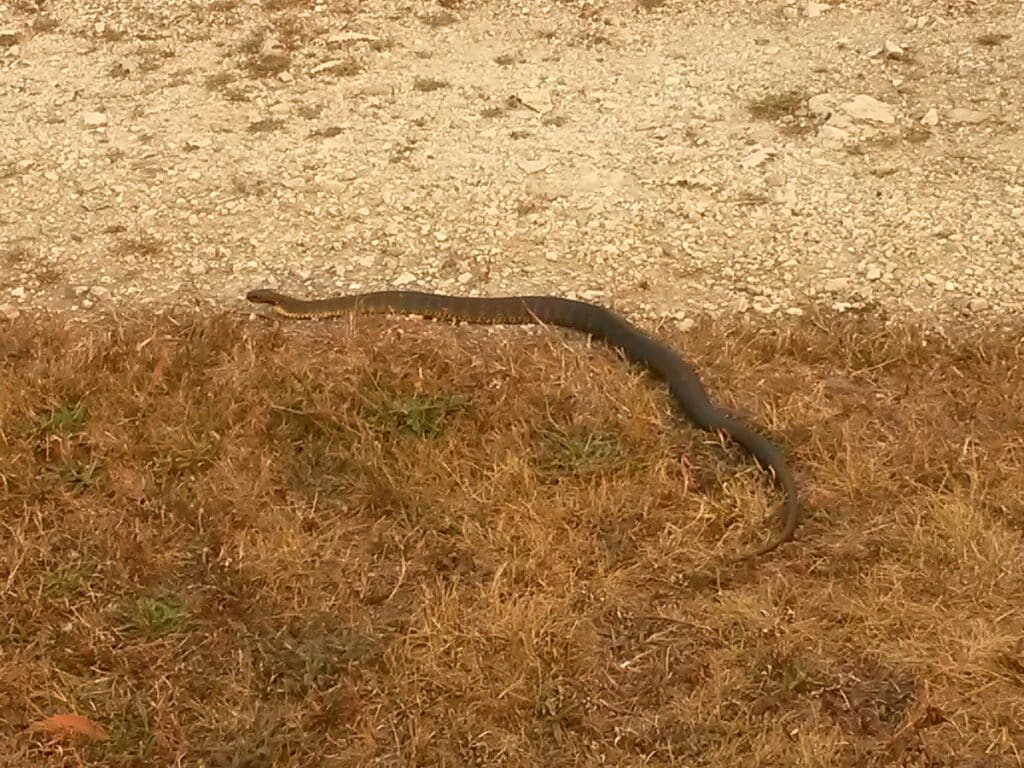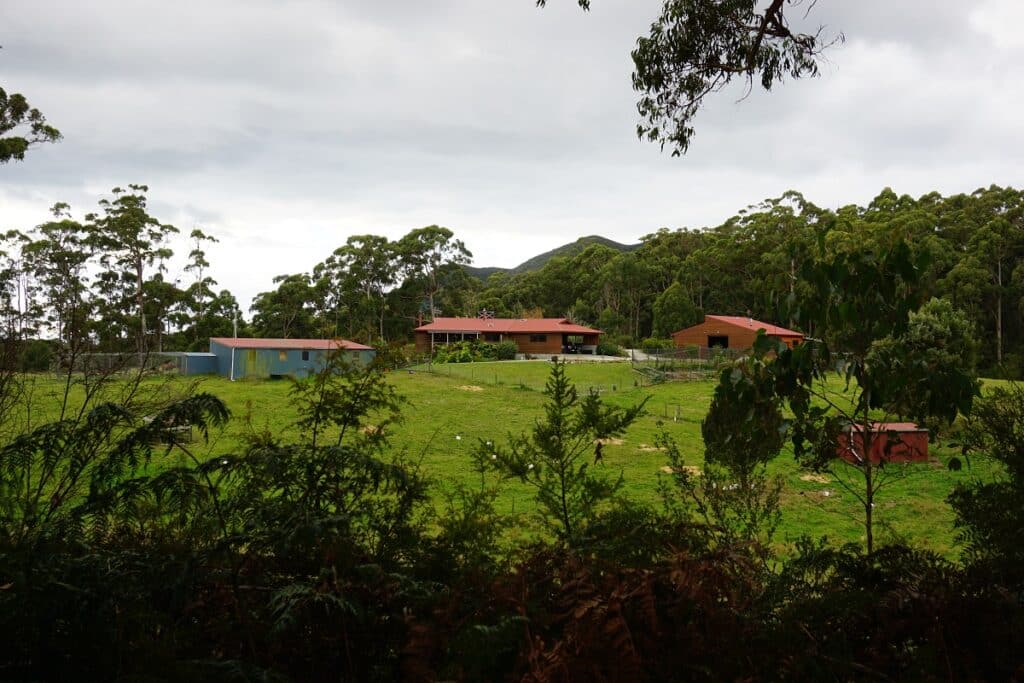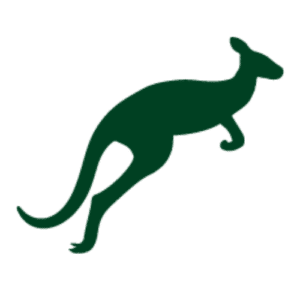Eagle’s Roost is a carbon negative conservation property that the owner shares with her B&B guests. Eagle’s Roost farmhouse is a comfortable cedar clad home with underfloor insulation and heat transfer ducting to all rooms to share the warmth of the big wood burner in the communal lounge room. There are two patios, both with great views, one facing west and the other north to take advantage of the sun or shelter at different times of the year.
Eagle’s Roost has two guest bedrooms, each with their own newly installed ensuite bathroom. Guests are free to explore the property and a cooked breakfast using local produce is provided each morning.
Helen Robertson is the owner of Eagle’s Roost, which covers 7.3 hectares, with numerous dams and creeks running through the property. Vegetation types include wet scerophyll, mixed forest and heath, as well as tea trees and tree ferns.
Wildlife species known to inhabit Eagle’s Roost include Tasmanian devils (Sarcophilus harrisii), spotted-tailed quolls (Dasyurus maculatus), short-beaked echidnas (Tachyglossus aculeatus), brushtail possums (Trichosurus vulpecula), ringtail possums (Pseudocheirus peregrinusI) bare-nosed wombats (Vombatus ursinus tasmaniensis), red-necked wallabies (Macropus rufogriseus) red-bellied pademelons (Thylogale billardierii) southern brown bandicoots (Isoodon obesulus), eastern barred bandicoots (Perameles gunnii), blotched blue-tongued lizards (Tiliqua nigrolutea), giant freshwater crayfish (Astacopsis gouldi), spotted galaxias (Galaxias truttaceus) grey (Accipiter novaehollandiae) and brown (Accipiter fasciatus) goshawks, brown falcons (Falco berigora) superb fairywrens (Malurus cyaneus), orange-bellied parrots (Neophema chrysogaster) and a range of other native bird species.
This sanctuary is featured in Wildlife Lands 17!
Five years ago, Ian and I found our patch of paradise here in Tasmania, combining sustainable living with active conservation. Compromising Ian’s desire for a sea view with mine to live next to a National Park, Eagle’s Roost is on the far southwestern corner of Rocky Cape National Park with views out across Sawyer’s Bay to Stanley.
As a retired zoologist, the first thing I did was set up my trail cameras in the forest to check out our ‘neighbours’ and my first video haul included footage of a wombat and two Tasmanian devils. Since then I have identified 27 Tasmanian devils and found two females with dens on the property. We’ve had the pleasure of capturing them both with full pouches waddling down the tracks and also their joeys exploring for the first time. I’ve also captured spotted-tail quolls, brushtail possums, ringtail possums, echidnas, pademelons, Bennett’s wallabies, southern brown and eastern barred bandicoots and cute little Tasmanian endemic long-tailed mice. I also got a big surprise to find a giant freshwater crayfish moving up the dam spillway.
I’ve developed a keen interest in fungi since moving here, identifying 321 species on our block so far. Tasmania’s fungi diversity is truly astounding. Birdlife is equally diverse and sightings include a pair of Tasmanian wedge-tailed eagles roosting in a stringy bark tree and the elusive, critically endangered orange-bellied parrot. Changes to farm management practices have resulted in a return of frogs to creeks which were worryingly silent when we arrived, with the number of burrowing crayfish burrows also increasing. An ongoing rehabilitation project involves returning the understorey to an acre of forested area previous owners had bulldozed.
A year ago my Ian died and so now Eagle’s Roost is a carbon negative conservation property that I share with my B&B guests. I feel very fortunate to be able to manage my small patch for conservation and to also show others how living sustainably doesn’t need to involve hardship—just a change in approach.

